Employee Pulse
Empowering a Team to Transform Escalations into Customer-Centric Solutions
Employee Pulse is a design-led solution that delivered clear business impact: reduced costs, increased adoption, and significant enterprise wins. This case study highlights my passion for empowering teams to drive customer impact through design leadership, guiding user-centered design from iterative improvements to major product launches and cultural transformation.
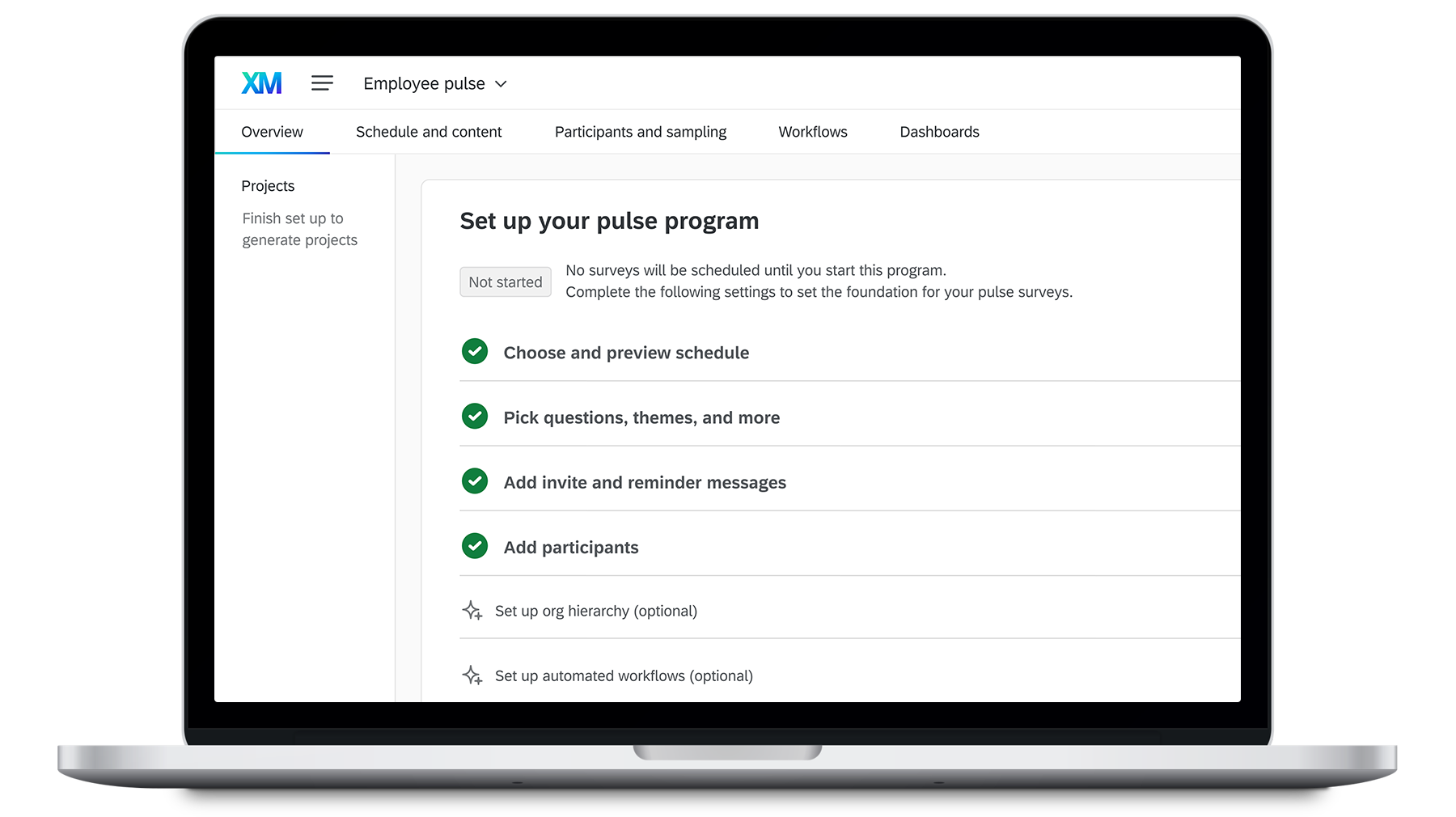
1 | Prioritize for impact
Frequent code yellows strained morale and diverted focus from critical problems.
To address this, we welcomed a new designer and ran a workshop to foster team empathy, ownership, and a shared vision.
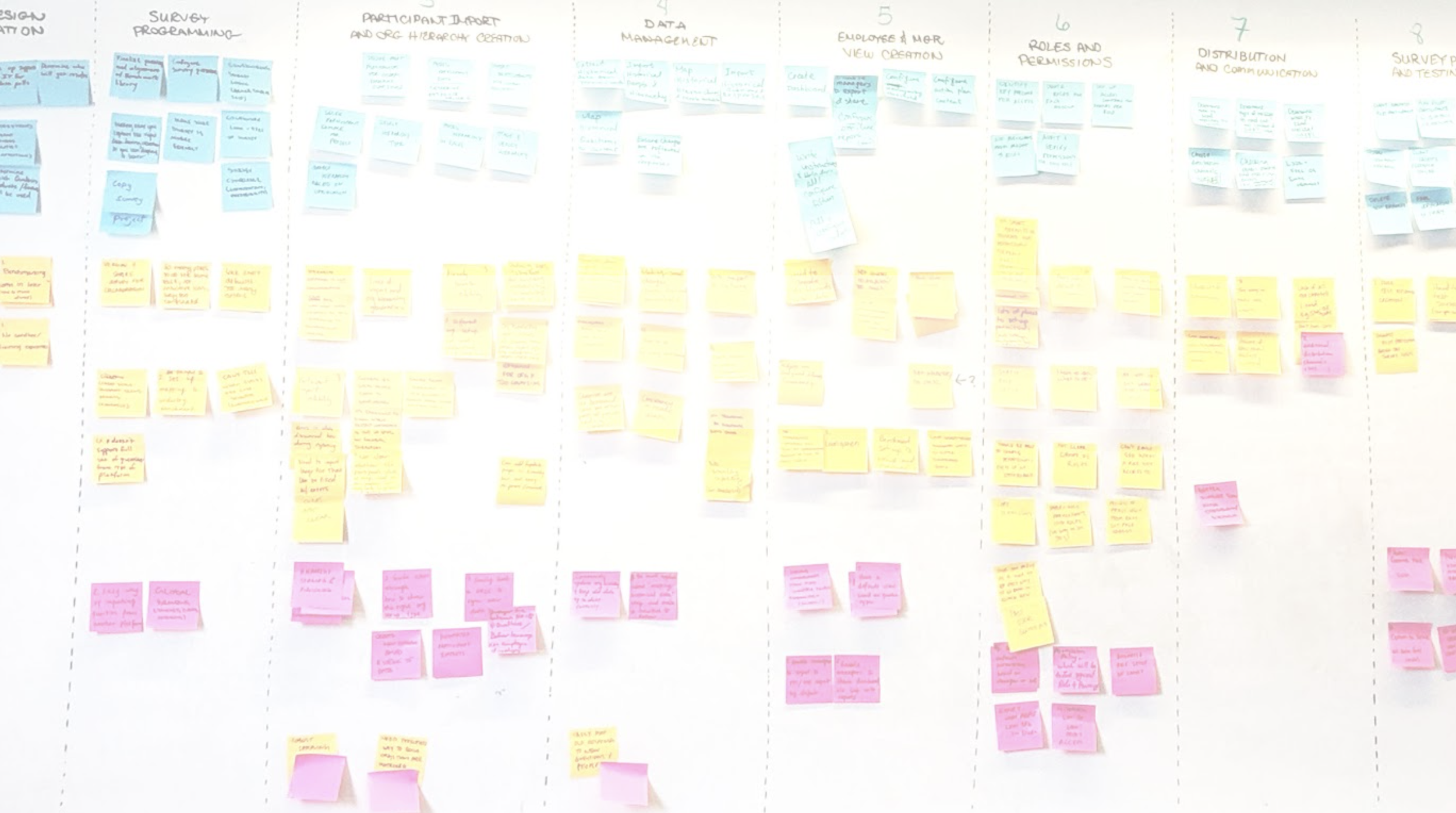
The team identified 84 steps across 13 milestones.
Reference: workshop summary
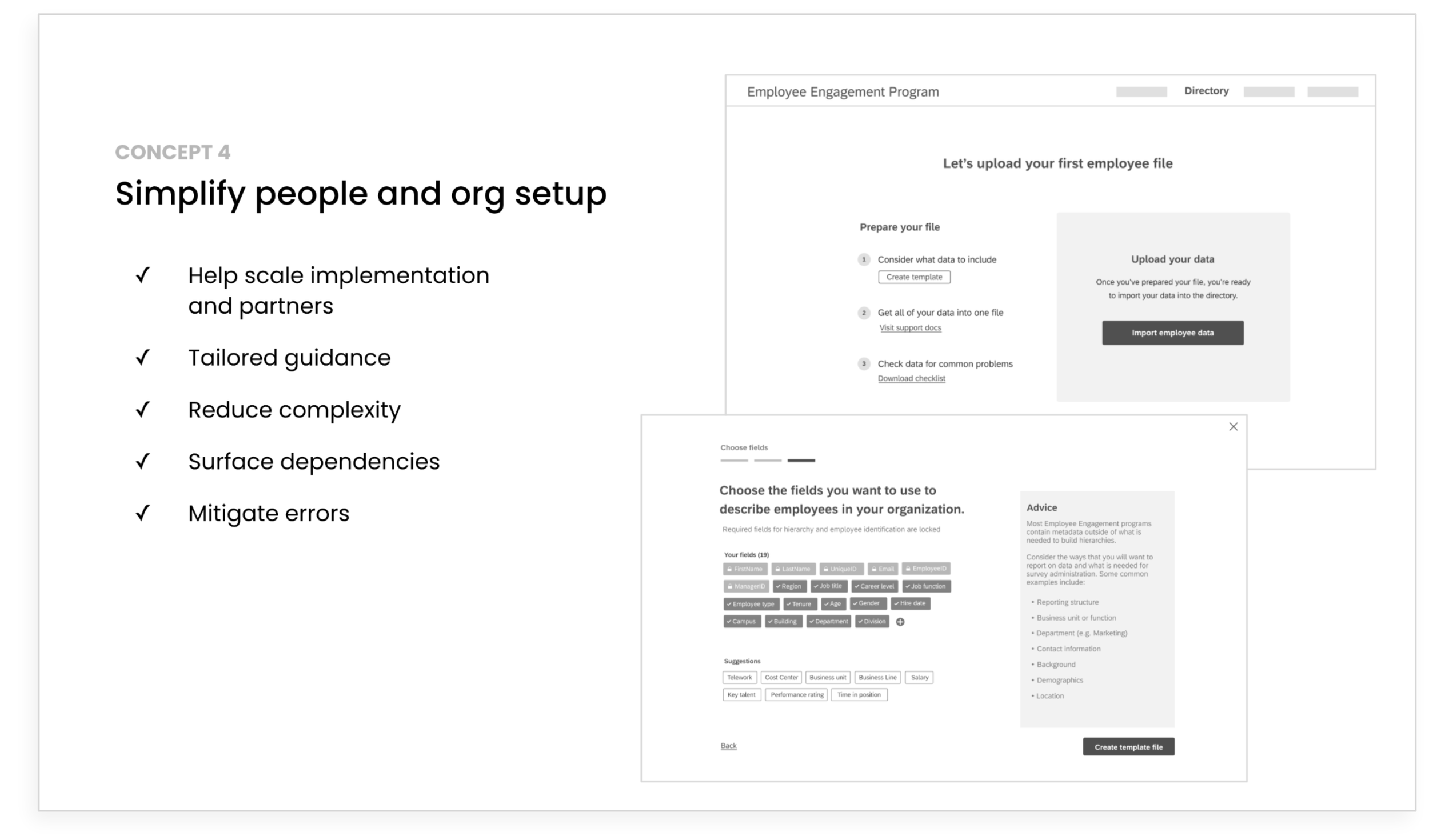
The collaboration framed critical problems & inspired solutions
I empowered the new designer to co-lead a workshop with customer-facing teams, where they accelerated onboarding and uncovered costly pain points. The designer played a key role in identifying that while many issues involved platform dependencies, the biggest challenges lay in participant management, which was uniquely on our team to solve. Partnering with a support engineer, the designer helped shape product investments that addressed the most urgent issues for customers and engineering.
Reference: share-out deck
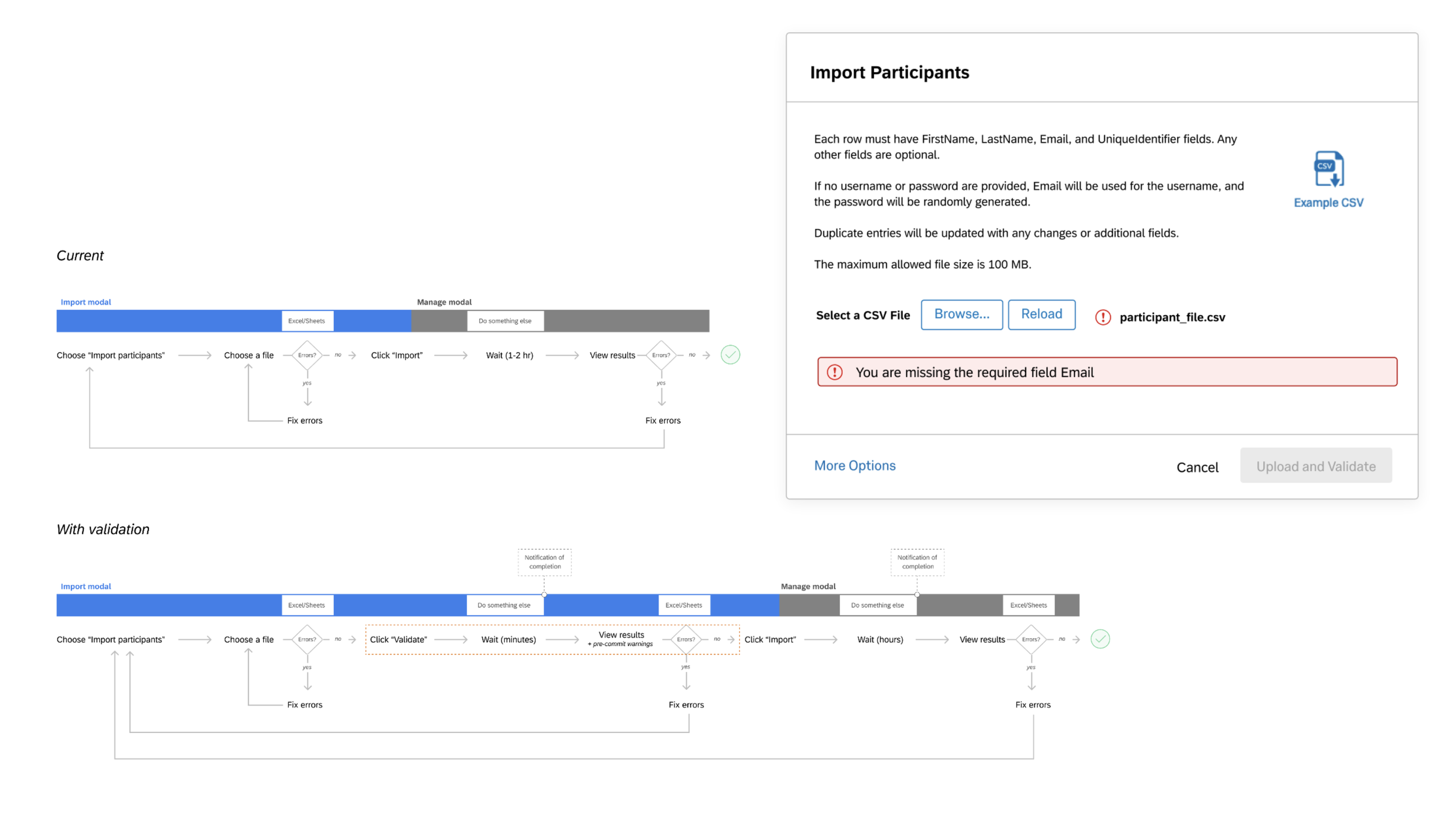
The designer led usability improvements & championed inclusive design across the org
In just a few months, the new designer became a key member of the team, driving incremental improvements and product simplicity. They championed inclusive design, sharing their passion with product and engineering partners, as well as the broader UX organization through awareness initiatives like this Accessibility & Inclusive Design presentation. I'm incredibly grateful of the positive impact they made on the product, team, and UX organization in such a short time.
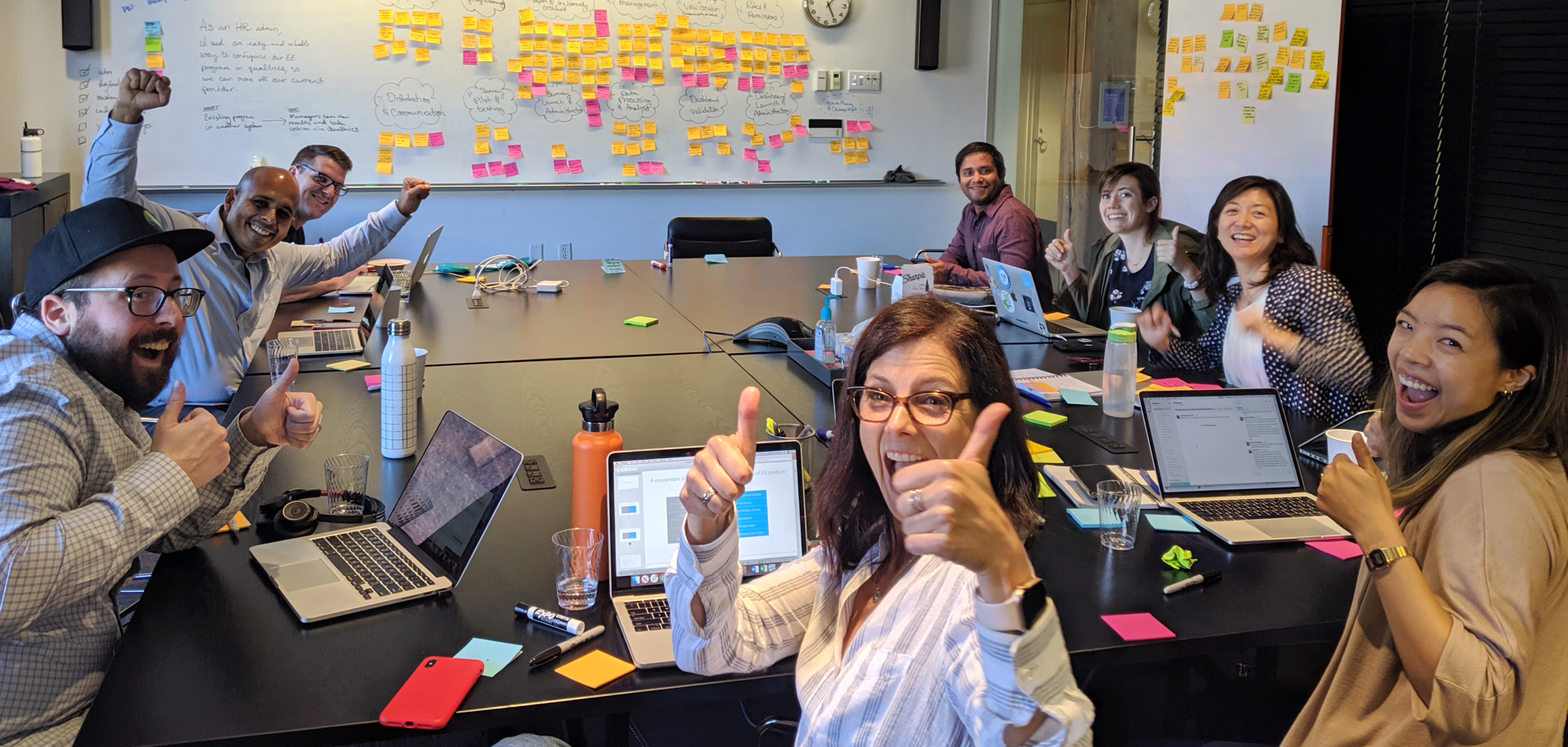
The team emerged from code yellow overload with critical UX issues & root causes addressed
Within a year, the key problems were resolved, and a product backlog was established. While it took time for engineering and the organization to catch up, the groundwork for broader improvements was set. To support the designer's growth, I transitioned her to a new team in an emerging space.
I continue to mentor and learn from her today.
2 | Collaborate across teams
As teams expanded and platform frameworks matured, the organization became ready to take on more ambitious initiatives to streamline the program for customers.
We onboarded a senior designer to lead Employe Pulse, connecting across teams to address user needs and develop solutions.
We re-ignited the program simplification effort with another collaborative, user-centered workshop with representatives from across the product org.
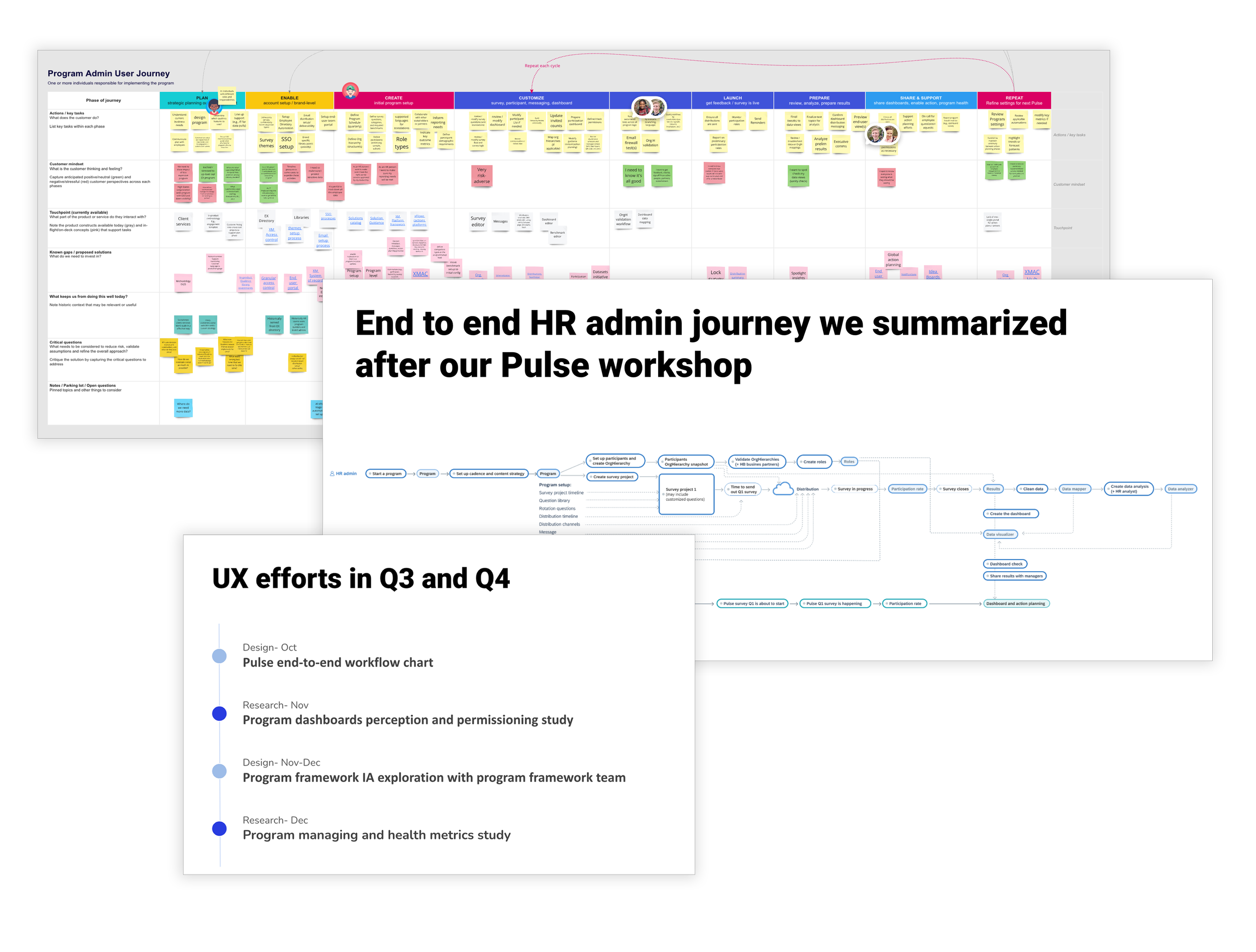
The core team inspired empathy & collaboration throughout discovery
The core discovery team—a Product Manager, UX Designer, and UX Researcher—used a cross-functional workshop to build empathy and ownership over the complex problem space. The workshop assessed platform frameworks and product concepts against core challenges, sparking fresh ideas and connections. Over several quarters, the team collaborated to define, design, and deliver key program elements, continuously testing with customers.
This team set a standard for collaboration and user-centered design across the org. I looked for opportunities to champion their efforts and share their outcomes and approach.
Reference: early progress update.
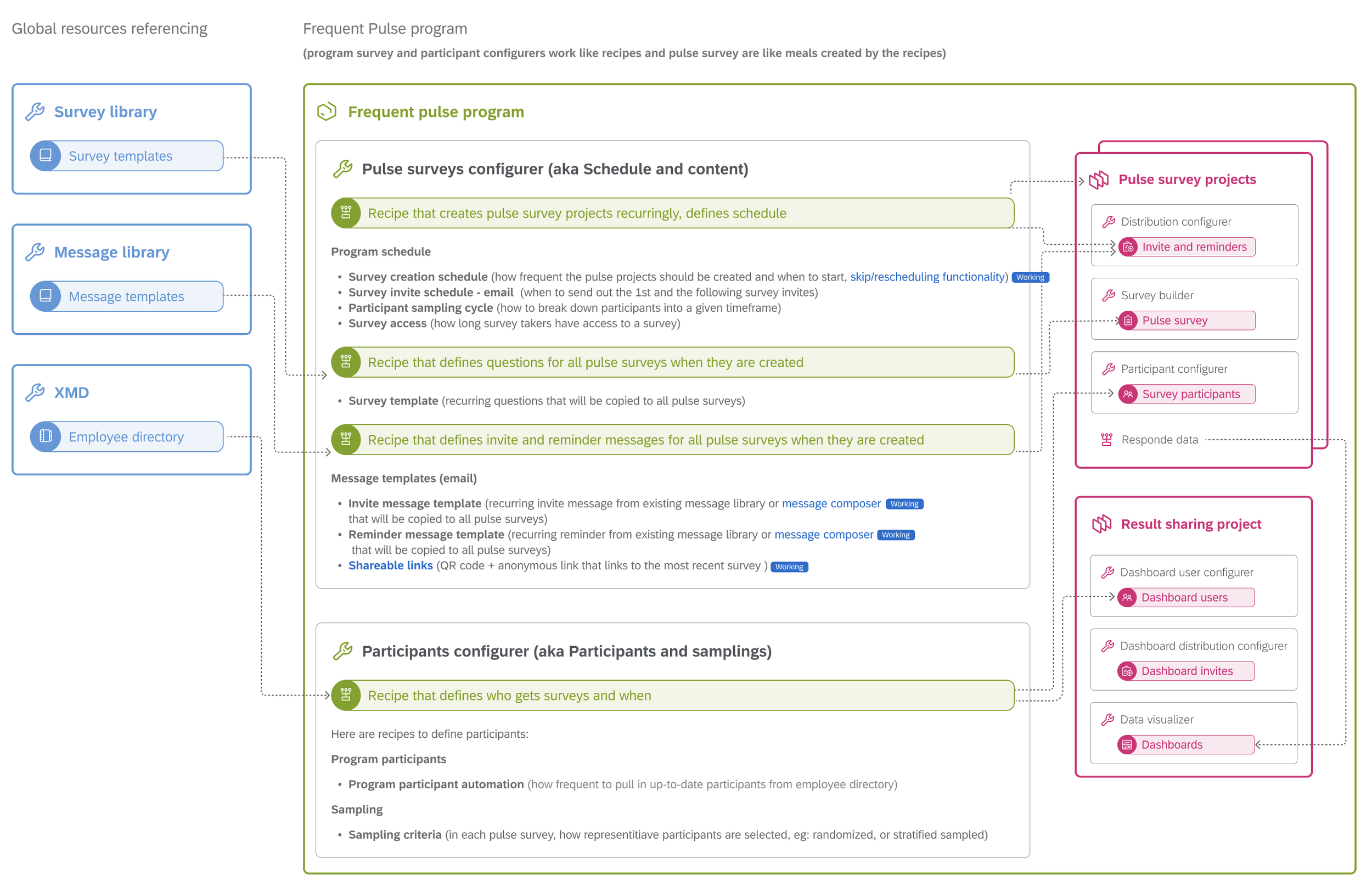
The designer grew as a leader, fostering cohesion and elevating UX outcomes across teams.
This ambitious project required the team to define requirements and navigate constraints across nearly every platform team. I supported the design lead in embracing ambiguity while staying true to their humble, reserved nature. Their collaborative approach through user-centered design activities earned trust across the organization, making them a role model for quiet leadership.
Their impact on the team and product was recognized with a promotion to Principal Designer.
Reference: UX architecture
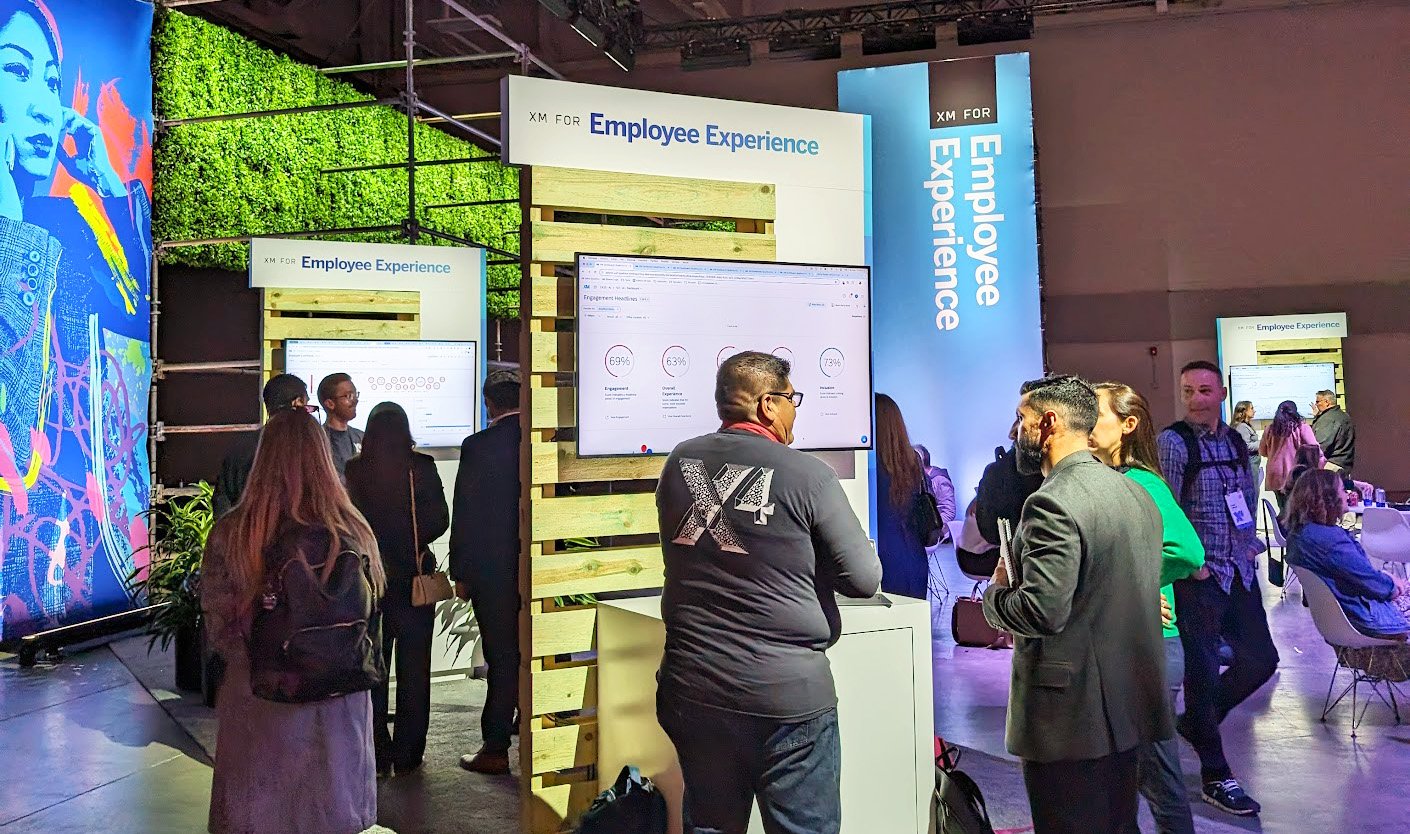
The product launch delivered tangible business impact and proved the value of user-centered design.
Employee Pulse reduced operational costs by 60% to enable large-scale customers to expand their programs. Automated pulsing mitigated churn, and enterprise wins included a global athletic brand (ACV $366K and TCV $1.1M) along with major corporations across aviation, finance and retail industries.
The team celebrated as customers effortlessly navigated a once-complex product at buzzing demo stations—a testament to their commitment to customer success.
3 | Foster growth
Our organization restructured into product units led by a trio of Product, UX, and Engineering leads, promoting diverse perspectives and shared ownership.
We mirrored this leadership model within the EX product unit, reinforcing cross-functional collaboration and shared responsibility for customer outcomes. The Employee Pulse team continued to demonstrate effective collaboration, customer commitment, and ownership within their Program Foundations charter, with increased autonomy and accountability.
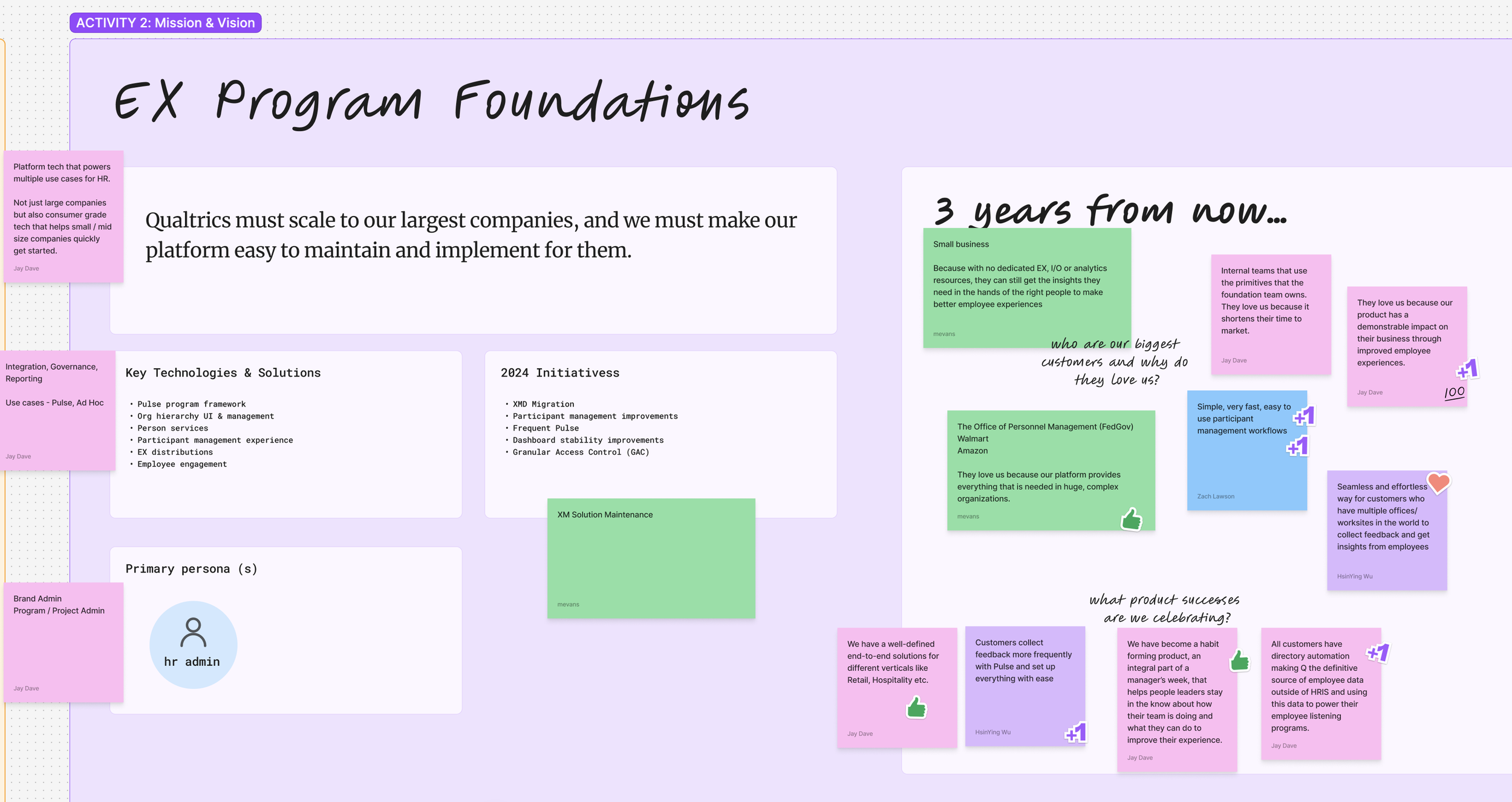
The team embraced their charter with new goals & ambitions
This transition was a somber time for the organization, as we had to say goodbye to many friends due to a new location strategy. We brought the new product unit together for an on-site, where teams took the lead in rebuilding under their new charters. Despite these challenges, the teams collaborated on setting goals, conducting retrospectives, and identifying necessary changes.
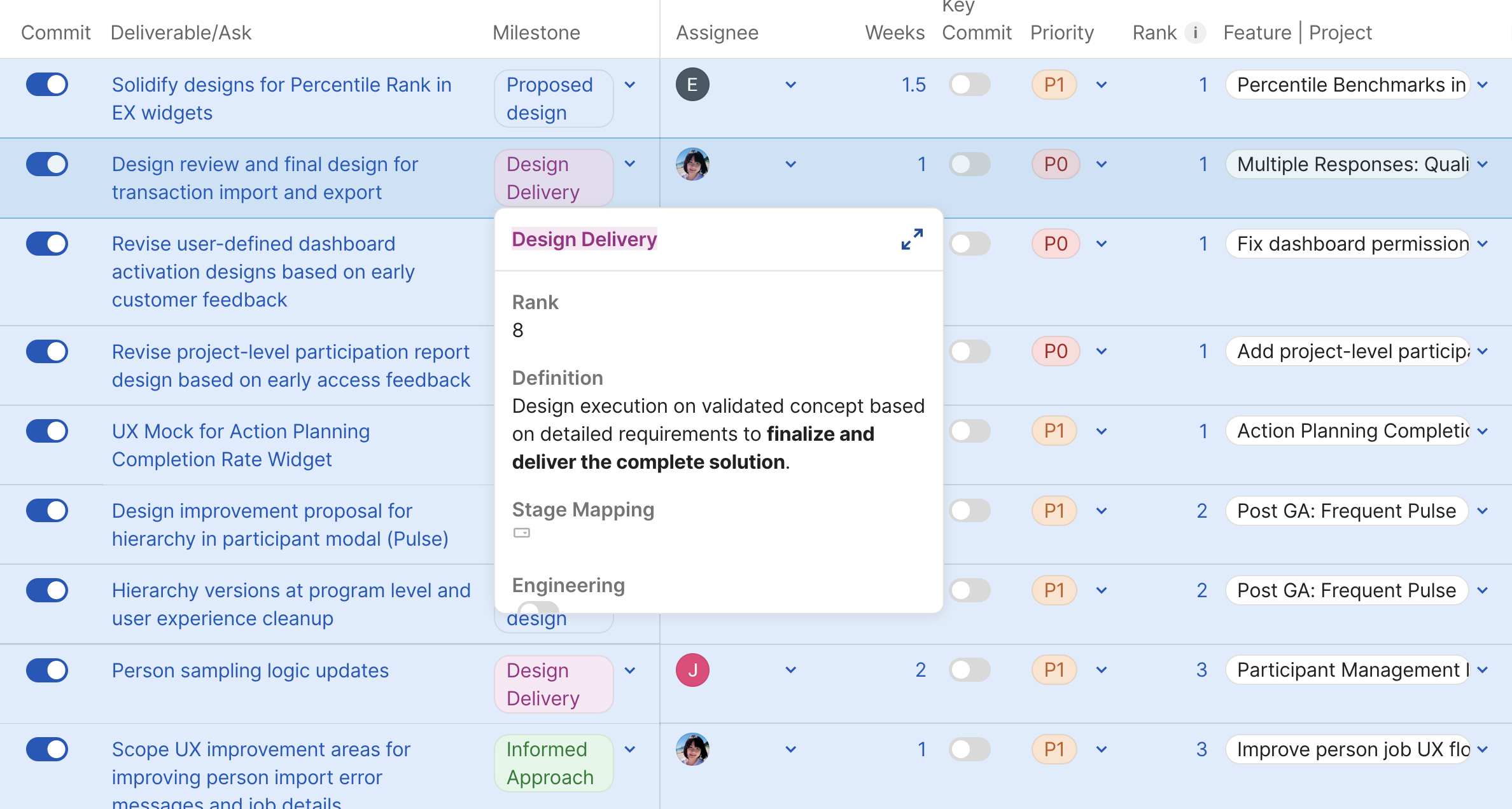
As the UX team grew, the lead empowered the team with planning & mentorship support
As the team expanded in Seattle and Krakow, the UX lead for foundations supported me and their teammates by delegating work to junior designers and overseeing projects through completion. Their role was pivotal in fostering team growth and support while developing their own skills toward UX management. The team continues to drive simplification and innovation in the Employee Pulse program framework, with a new generation of contributors leading the next phase of growth.
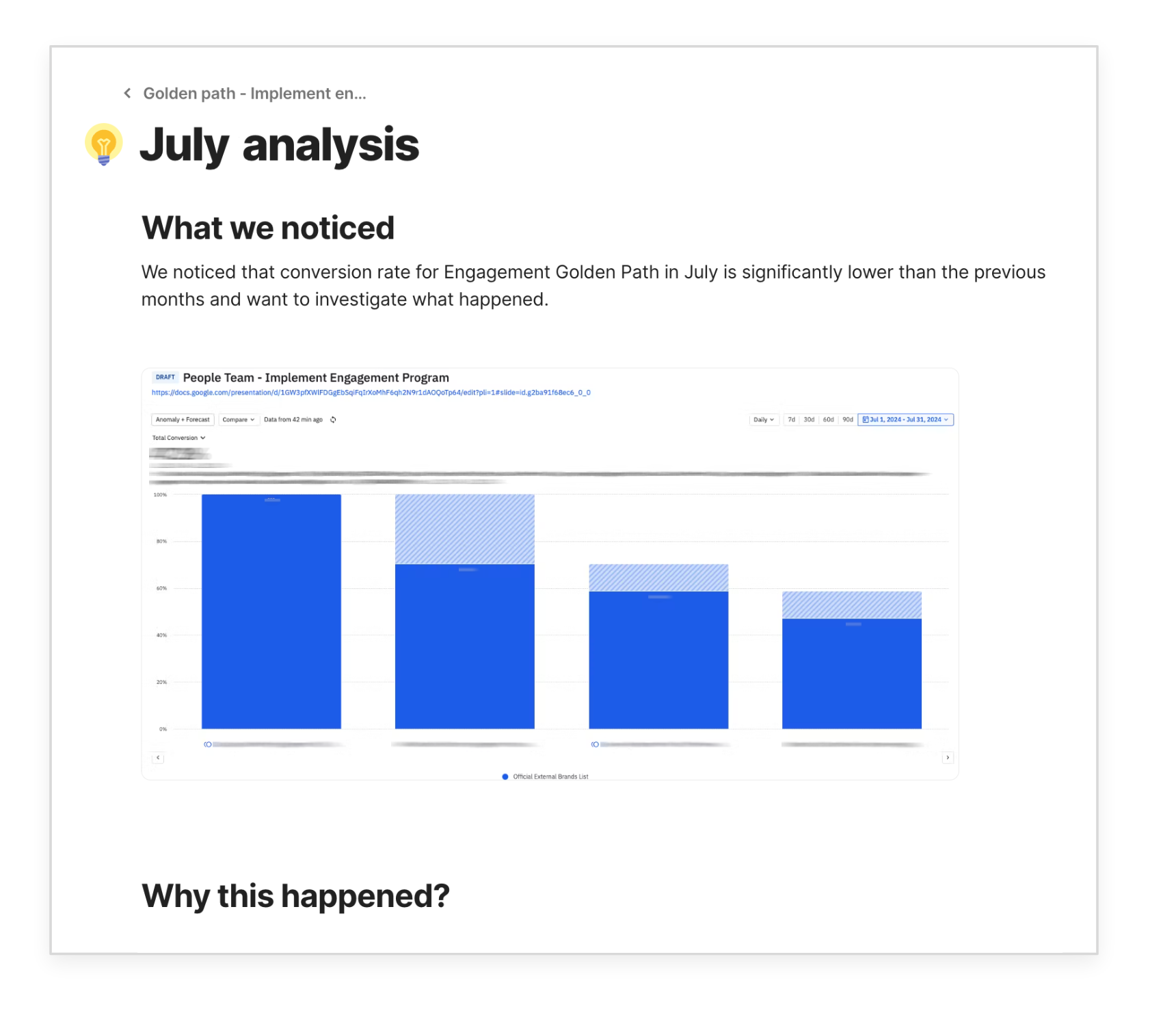
The lead championed ease of use metrics, developing their leadership skills and increasing UX impact
With the new operating model, the team focused on setting rigorous goals and accountability metrics. Using Golden Path dashboards, they tracked completion rates, identified root causes, and reported action plans during monthly reviews. The UX lead for EX Program Foundations took ownership of the 'Implement Engagement Program' workstream, crucial for addressing churn and renewal risks.
Embracing this challenge, the designer developed skills in product analytics, using them to guide the team in understanding key issues and driving actionable insights. For example, uncovering gaps between the first two steps led the team to audit and improve some critical error messaging. The designer then collaborated with a content designer to create a messaging library, scaling the learnings for future use.
Closing thoughts
The team’s growth and collaboration had a lasting impact on our customers, the organization, and each other, while shaping my own leadership journey.
As the team advanced to the next phase of product growth, we leveraged refined business data and emerging technologies like AI and LLM to drive continued success. This story is just one chapter in the ongoing evolution of the Employee Experience product unit and the broader products organization, where a focus on user-centered solutions continues to create meaningful impact.